|
Links
|
|
|
|
Previous projects
|
|
|
|
|
|
Earlier Work
|
|
|
|
|
|
|
|
We investigate quantum systems relevant to the development of future quantum technologies, such as
quantum computers and quantum sensors. We are part of the wider UCL optomechanics
group which aims
to cool a small mechanical oscillator in an optical cavity down to its quantum ground
state. This may be viewed as a ''table-top'' version of the LIGO experiment that detected gravitational waves in 2016. But here the aim is to cool a levitated nanoparticle to its quantum ground state and then
to investigate the possibilities for quantum sensing and the realization of quantum behaviours in a system approaching the macroscopic domain.
We also investigate quantum spin dynamics, with a view to understand and control
their quantum coherence. One motivation is the possibility to extend powerful techniques such as NMR and MRI
down to the single spin level with single-spin sensing techniques.
We investigate also how quantum spins qubits interact with the surrounding
environment. Typically, the
environment are other quantum spins so the back-action between environment and target spin, and entanglement between them makes the behaviour very different from
the situation where a quantum particle loses coherence through its interaction with classical environmental noise. An area of current interest include characterisation and manipulation of nuclear spin registers.
We are theorists but work closely with experimental groups including the optomechanics group at UCL and other international groups.
For further information and details, please contact: Prof. Tania Monteiro
t.monteiro@ucl.ac.uk
TEL.+44 (020)7679 3504
NEWS: LEVITATED OPTOMECHANICS GOES QUANTUM
The years 2020-2021 have seen momentous progress since, after a decade of efforts, experiments have successfully cooled levitated nanoparticles to below one quantum above the quantum ground state. Two experiments used either techniques of quantum measurement control
(see overview in
Tania S Monteiro, Nature, 15 July (2021). However, our work concerns more coupling of mechanical motion to a quantum mode of an optical cavity and U.Delic et al (Science 2020) reported also quantum ground state cooling.
(a) We have developed the 3D theory for the coherent scattered set-up used there and shown
that even the quantum cooling experiments need to consider hybridisation for reliable estimation of the final energy Quantum Limited displacement sensing in 3D cavity optomechanics M Toros and T. S. Monteiro
PRR, 2, 023228 (2020). In the experiments, an avoided crossing with the optical mode causes the strong coupled mode (X) becomes degenerate with a weaker coupled (Y)mode
causing mixing.
(b) More recently, with Uros Delic, and PhD student Fagin Hales, we have shown that cooling
of the transverse plane is impeded by the formation of dark modes that cannot be cooled. Hence full 2D in-plane cooling is possible only within a limited parameter region
a "Goldilocks zone" where 2D quantum cooling becomes possible Coherent-scattering two-dimensional cooling M Toros, U Delic, F Hales and T. S. Monteiro
PRR, 3 023071 (2021). The onset of these dark modes was subsequently observed
experimentally as discussed in News and Views Tania S. Monteiro
Nature Physics, 16 August (2021).
|
(a) Analysis of quantum cooling experiments
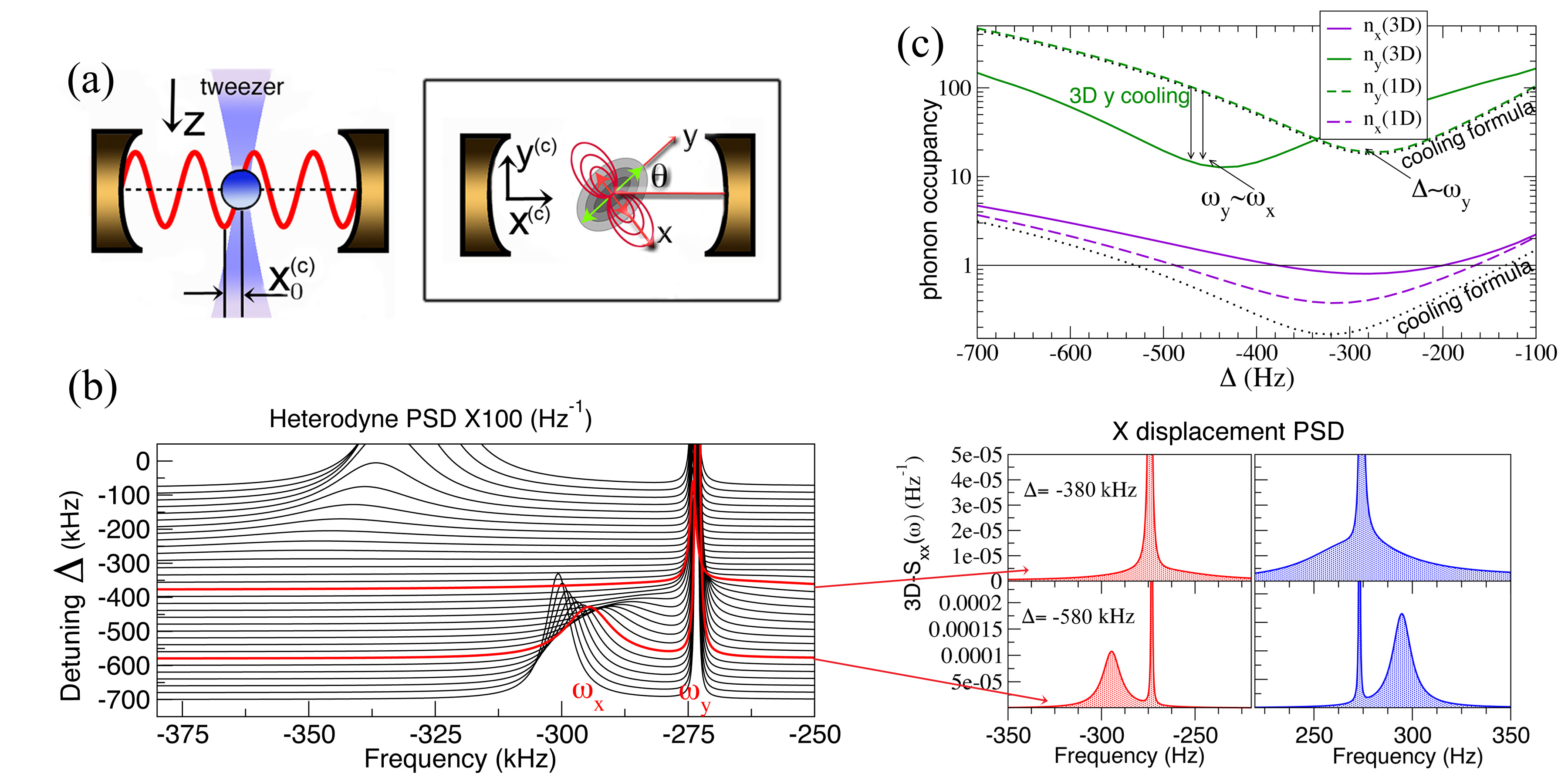
showing hybridisation
|
(b) Towards 2D
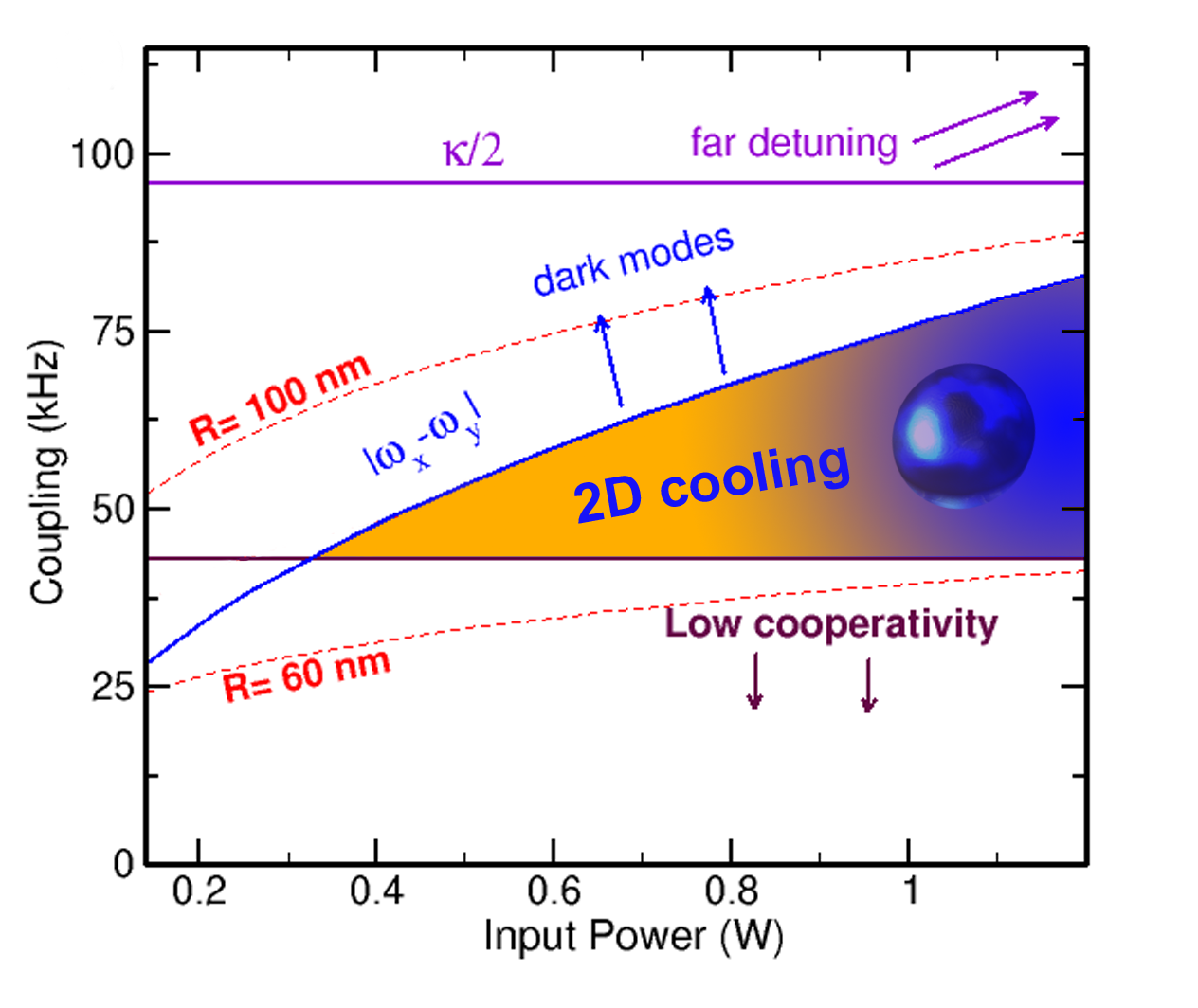
quantum cooling
|
SPIN SENSING AND NUCLEAR SPIN REGISTERS
|
Single-spin

Sensing
|
Coherence 'diamonds'
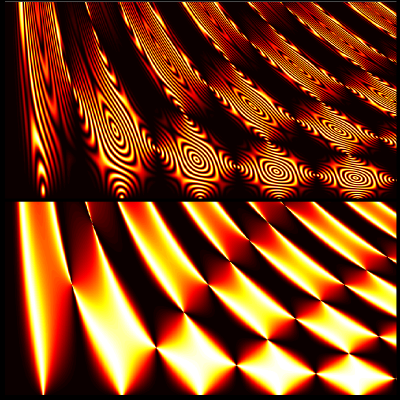
for an NV center in diamond
|
Coherence
Map
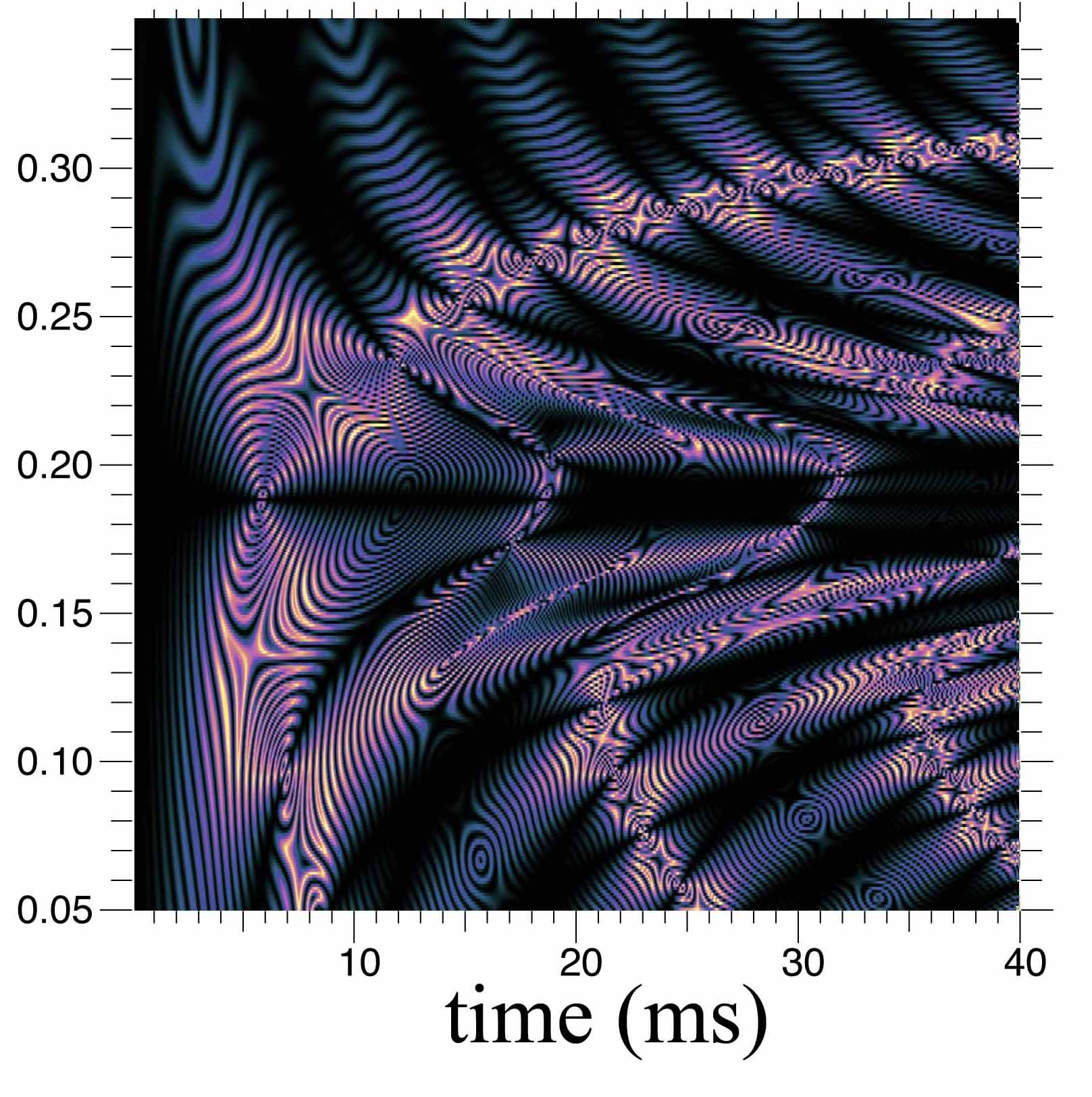
for bismuth in silicon
|
We introduced and are currently further developing an approach which allows physical insight on the quantum processes underlying single-spin sensing experiments. The experimental features arising from periodically repeated sequences of microwave control pulses, called dynamical decoupling
are analysed in terms of the underlying quantum Floquet spectrum. This allows new insights in understanding single spin dynamics as well as many-body interactions and quantum strong coupling regimes which are less amenable to usual
classical signal-processing methods of analysis.
We introduced this idea of Floquet spectroscopy in J. E. Lang, Renbao Liu and T. S. Monteiro
Phys. Rev. X 5, 041016 (2015). It was then applied to analyse spurious dips in coherence in J. E. Lang, J. Casanova, Z.-Y. Wang, M. B. Plenio, T. S. Monteiro Phys. Rev. App 7, 054009 (2017).
Dynamical decoupling, once a technique for suppressing environmental decoherence became a tool
for nuclear spin sensing and atomic scale MRI. Now in fact it is increasingly used to initialise and control nuclear spins around an NV electronic spin. We used our Floquet spectroscopy approach to show that certain pulse over or under-rotations, by lifting degeneracies in the underlying Floquet spectrum, coffer protocols that hyperpolarise and initialise a nuclear bath. One implementation, a pulse protocol called PolCPMG was experimentally demonstrated in in J. E. Lang et al, PRL 123, 210401 (2019) , see proposal in arxiv1810.00174.
LATEST NEWS: Adiabatic control: PhD student Oliver Whaites has joined us! Oliver is currently investigating combining adiabatic control and dynamical decoupling see O.T. Whaites, J.Randall, T.H. Taminiau, T. S. Monteiro in arxiv2107.101931 July 5 (2021) .
|
Congratulations to Dr Erika Aranas and Dr Jacob Lang who
successfully defended their PhD theses!
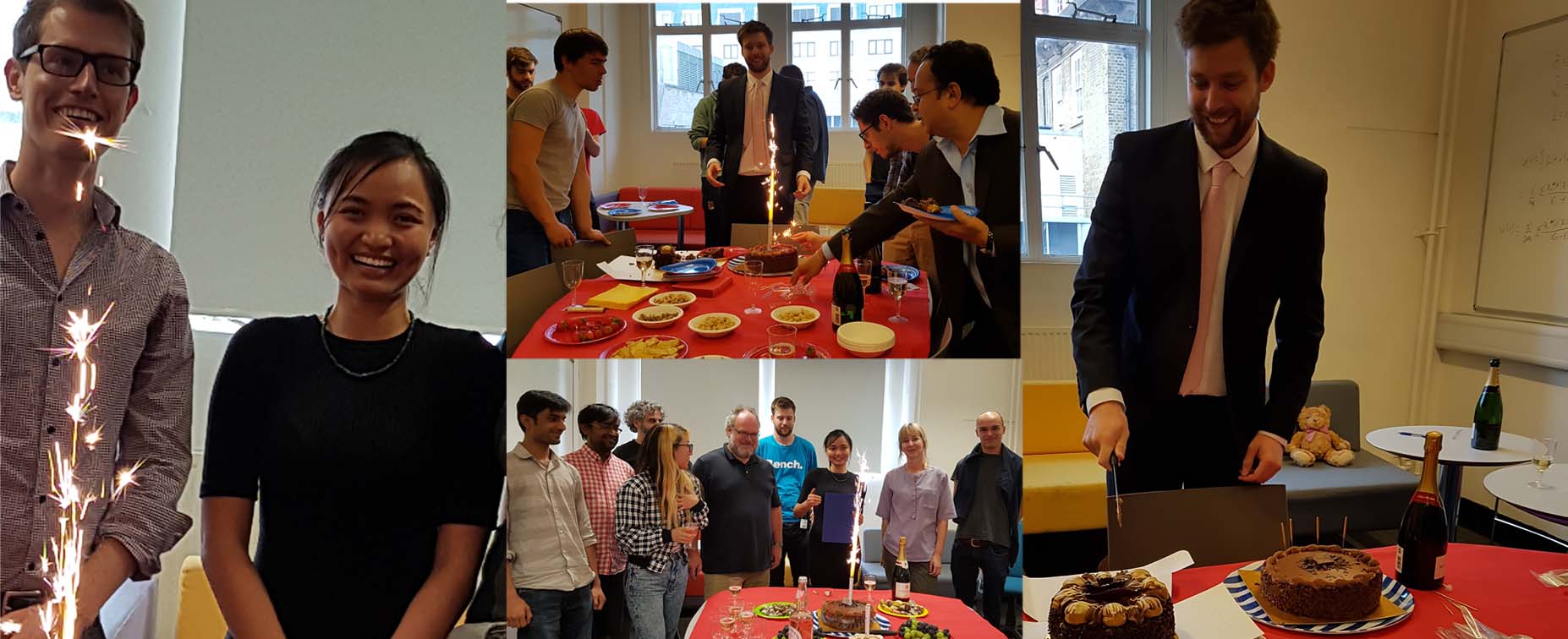
Jacob Lang has been awarded an EPSRC doctoral prize to continue his research on quantum spin sensing and Erika Aranas is currently on a DIS fellowship with our favourite tech start-up, the ASI. Erika is moving to Microsoft Research Cambridge. Jacob is now a machine learning scientist.
|
|
Our paper on imaging heterodyne correlations is published in Phys.Rev.Lett.(2018)
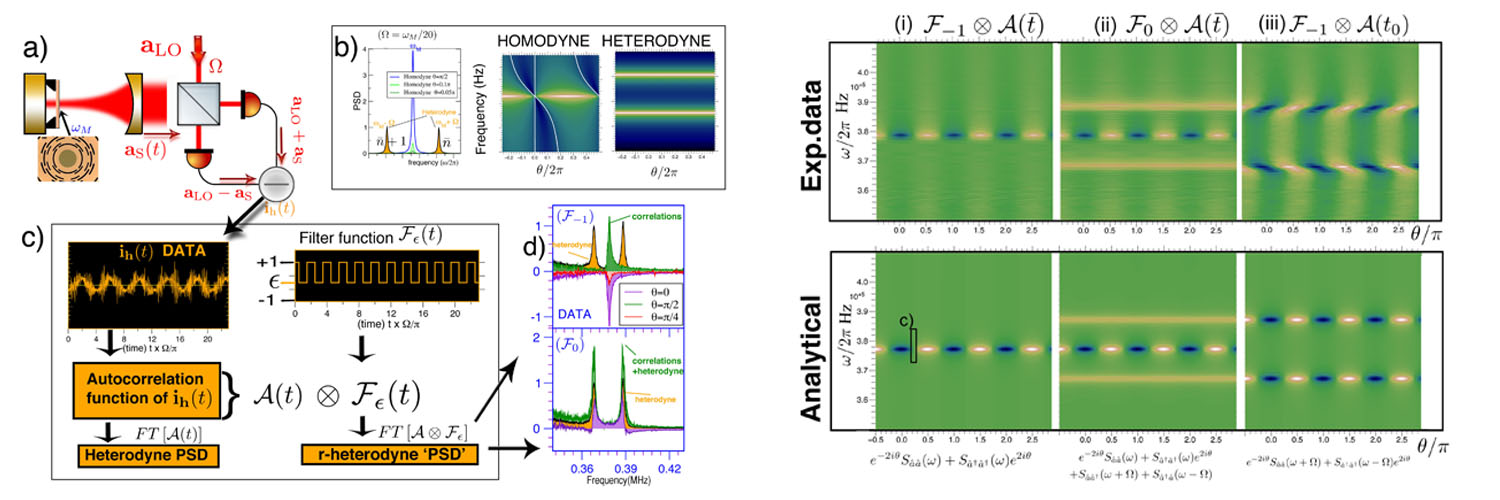
Heterodyne and homodyne are techniques used to amplify the tiny quantum fluctuations in the output
of a cavity- they are the mainstays of quantum displacement sensing, enabling (e.g. with LIGO) detection of motions on scales of a fraction of an atomic nucleus. However they both lose some important quantum dynamical correlations.
We introduce and verify experimentally a method to restore the lost correlations in heterodyne detection
and to permit a "best of both worlds" hybrid spectrum that exposes simultaneously quantum correlations in the light and in the mechanical motion. See A. Pontin, J.E. Lang, A. Chowdhury, P. Vezio, F. Marino, B. Morana, E. Serra, F. Marin, T.S. Monteiro Phys. Rev. Lett. 120, 020503 (2018)
|
|
Our paper on so-called "spurious" resonances in NV spin sensing with diamond.
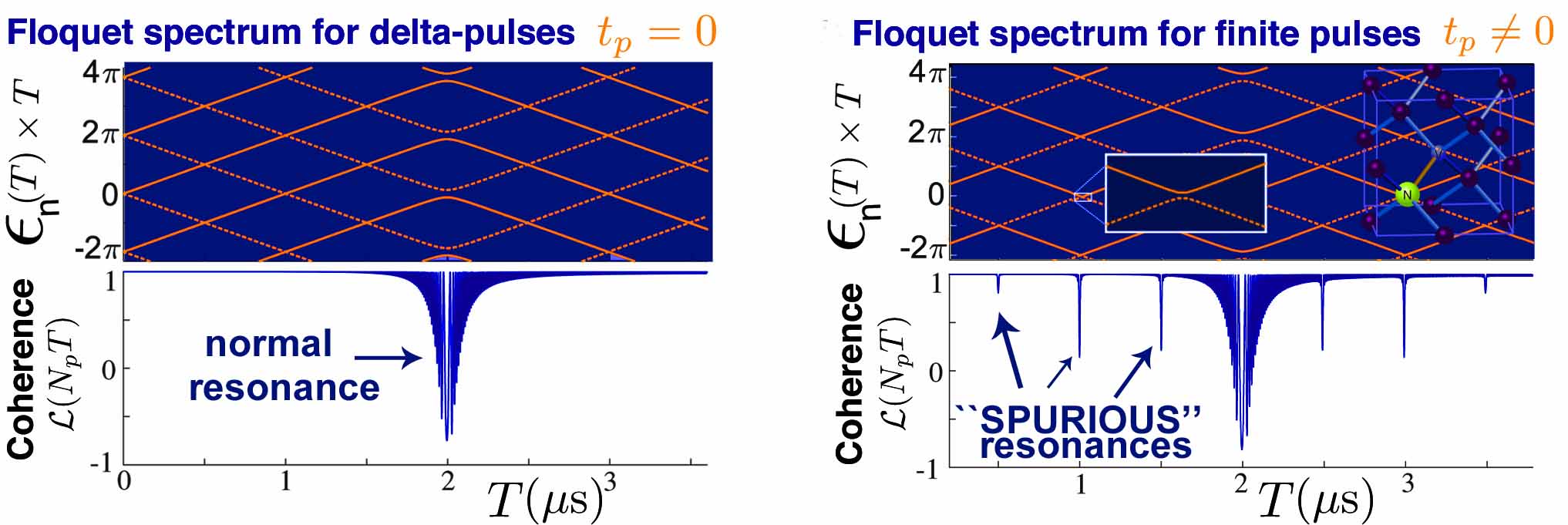
Recently new and unexpected spectral features in the coherence of NV spins in diamond, associated with
control pulses of finite duration, were identified experimentally. Here we analyse them theoretically in terms of an underlying landscape
of Floquet avoided crossings which are usually closed and inactive; but are activated whenever quantum evolution under control pulses is not "sudden". See J. E. Lang, J. Casanova, Z.-Y. Wang, M. B. Plenio, T. S. Monteiro Physical Review Applied 7, 054009 (2017) We argue these ultra narrow features can offer a valuable sensing resource and show how to calculate their strength and position analytically.
|
|
We develop theory and models
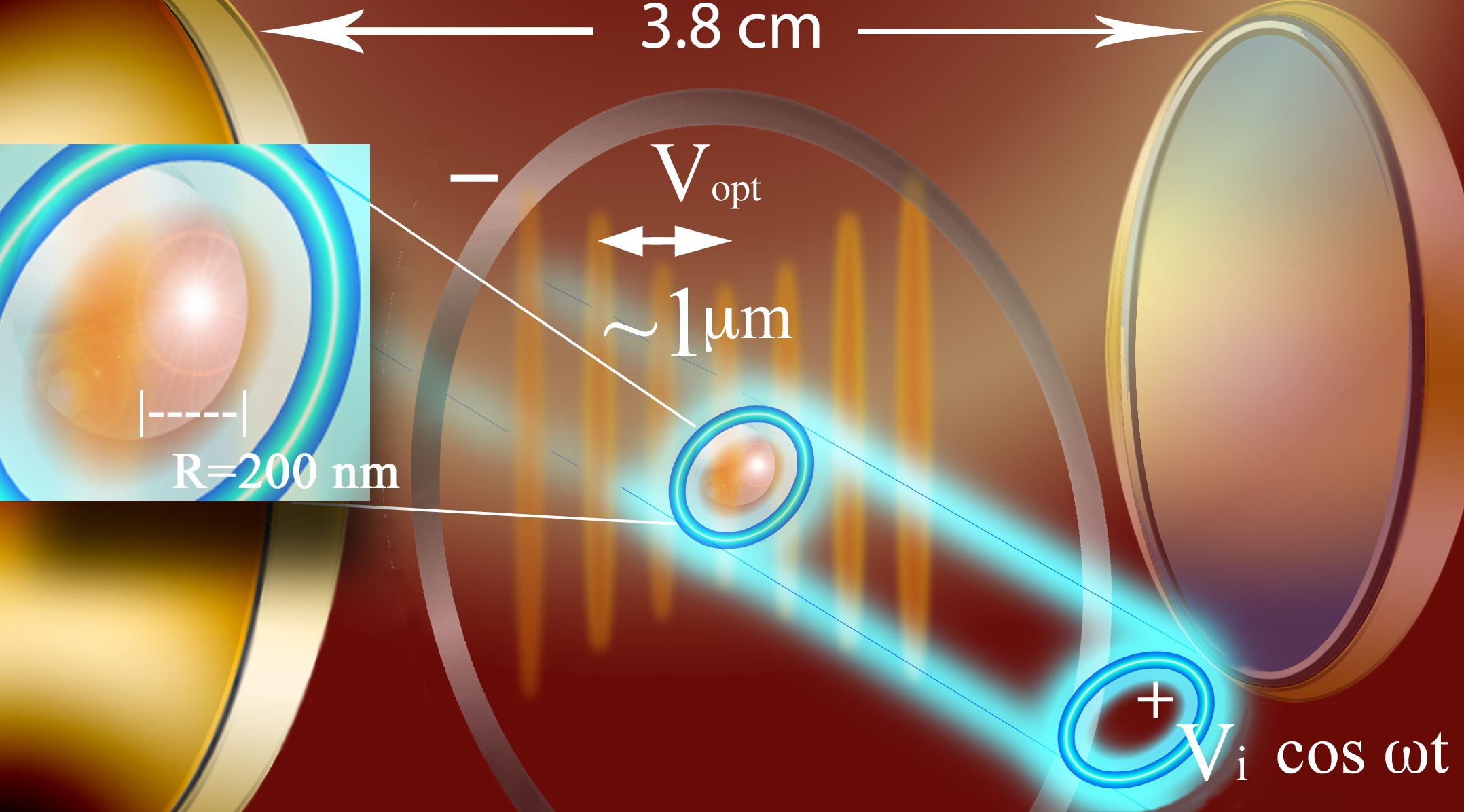
for the hybrid trap experiment
|
The UCL Hybrid Trap
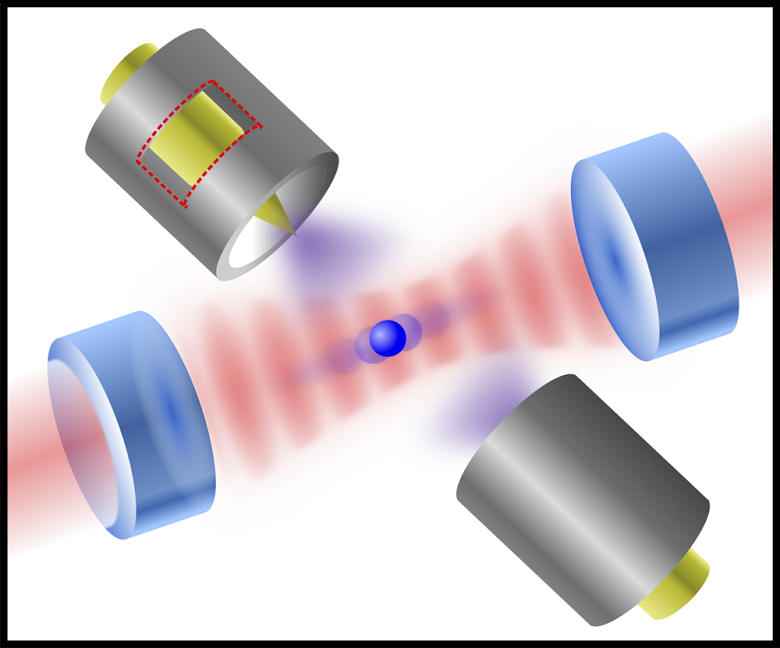
aims to cool a levitated nano particle to its quantum ground state
|
Schlumberger Fellow
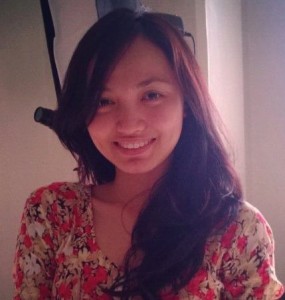
Ms Erika Aranas joined the project in 2014.
|
From our recent papers "Cavity cooling a single charged nanosphere"
Phys.Rev.Lett. 114 123602 (2015).
see also Physics Focus
and "Nonlinear dynamics and strong cavity cooling of levitated particles"
Phys.Rev.Lett. 117 173602 (2016).
|
Our new paper on the theory of the hybrid trap has appeared in the New Journal of Physics
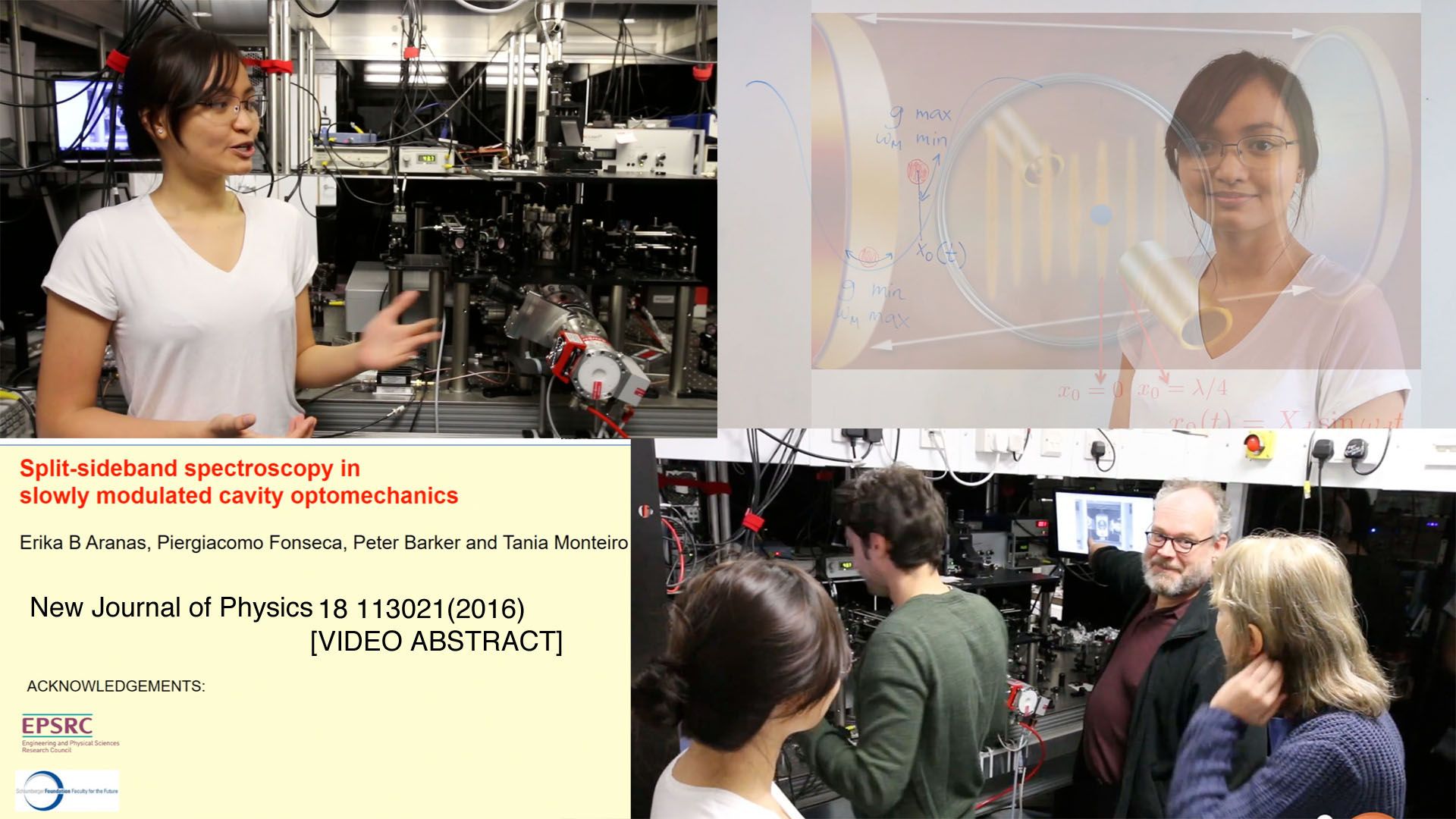
In a 3 minute video online with NJP 18,113602(2016), Erika Aranas and group members explain the work.
|
|
Our paper "Keeping a qubit alive in natural silicon: Optimal working points or dynamical decoupling?"

Our full quantum bath calculation of decoherence of bismuth quits
in silicon by flip-flop noise from surrounding nuclei: S J Balian, Renbao Liu and T.S.Monteiro Phys.Rev.B 91, 245416 (2015).
We provide the first demonstration of the only fully "many-body"
coherence decay mechanism: in other words, the Hahn echo decay at optimal working points is caused almost entirely by environmental flip-flops from 3-body clusters, since the pair contribution is completely eliminated at an optimal working point. All other coherence decays investigated previously for any silicon donors are largely accounted for by pair flip-flops, with higher orders providing only a quantitative correction. We also showed dynamical decoupling fully restores the pair contribution which is once again dominant at or away from optimal working points
for all donor qubits.
This was the last of our papers aiming understand dramatic suppression of coherence in bismuth donor quits at Optimal Working Points starting with our early quantum bath calculation S Balian et al Phys.Rev.B 86, 104428 (2012) with the first ever theoretical demonstration of the orders of magnitude coherence enhancements at
OWPs.
|
Spinning (out)!
Bismuth donors were pioneered as spin qubits in 2010 at UCL in a paper with (then PhD student)
Marc Warner G. W. Morley, Marc Warner et al Nat. Mat. 9, 725 (2010). Marc left for the US and returned to the UK
to launch a tech start up ASI Data Science.
Seto Balian has now joined Marc at The ASI!! We wish Marc and all the brilliant people at the ASI all the best for the future!!
2015-2016 GALLERY
|
PhD students Jacob Lang and Erika Aranas took part in the 2016 Physics Hackathon
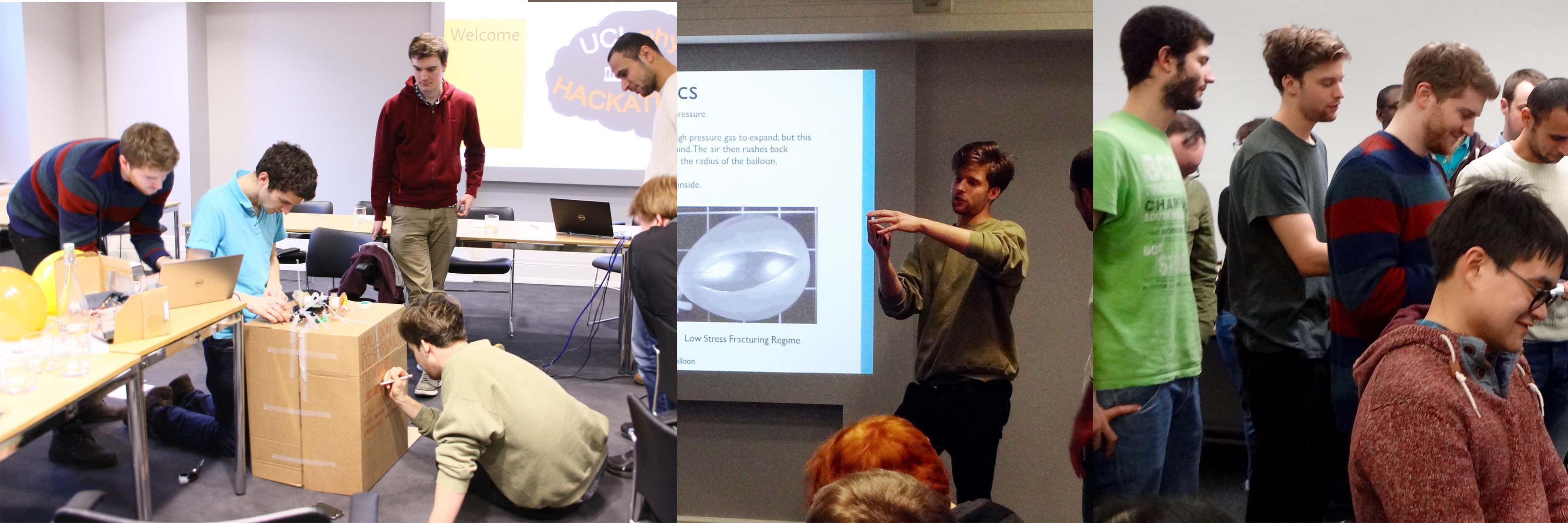
Jacob Lang & team building remote detonation device; Jacob presenting the scheme; receiving bit-coin prizes.
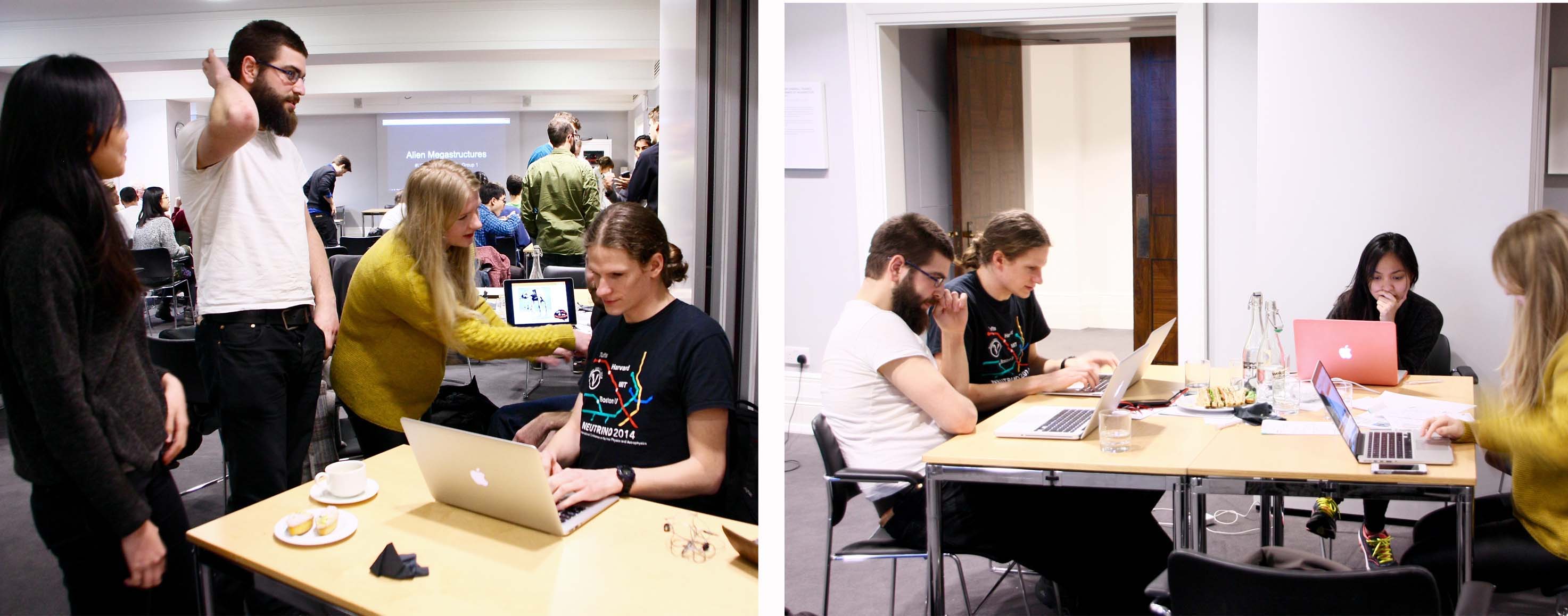
Erika Aranas and Dan Golberg of the opto group hard at work with their 2016 hackathon team.
|
|
Seto Balian and Jacob Lang
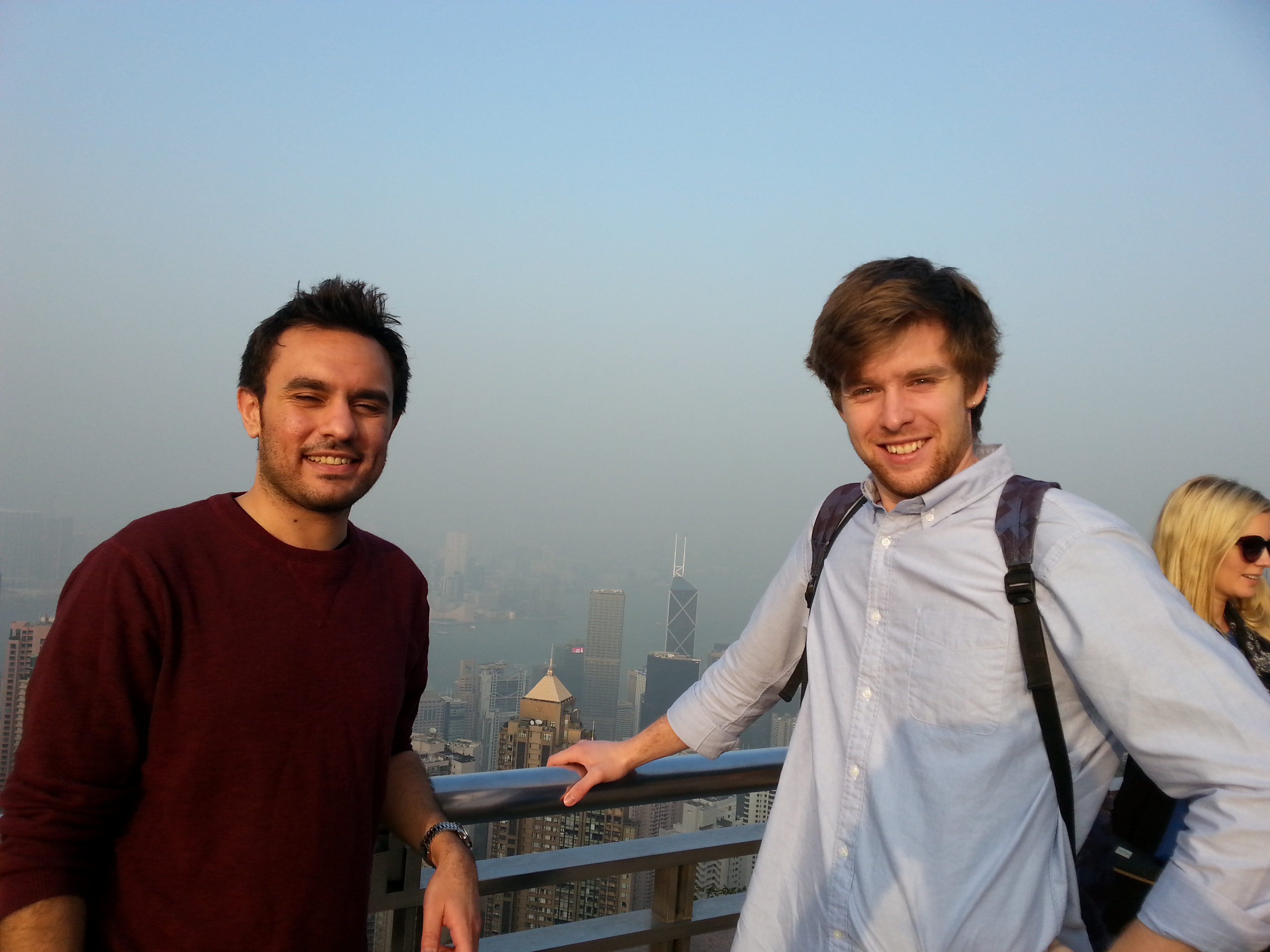
visiting Renbao Liu in Hong Kong.
|
Dr S. J. Balian!!
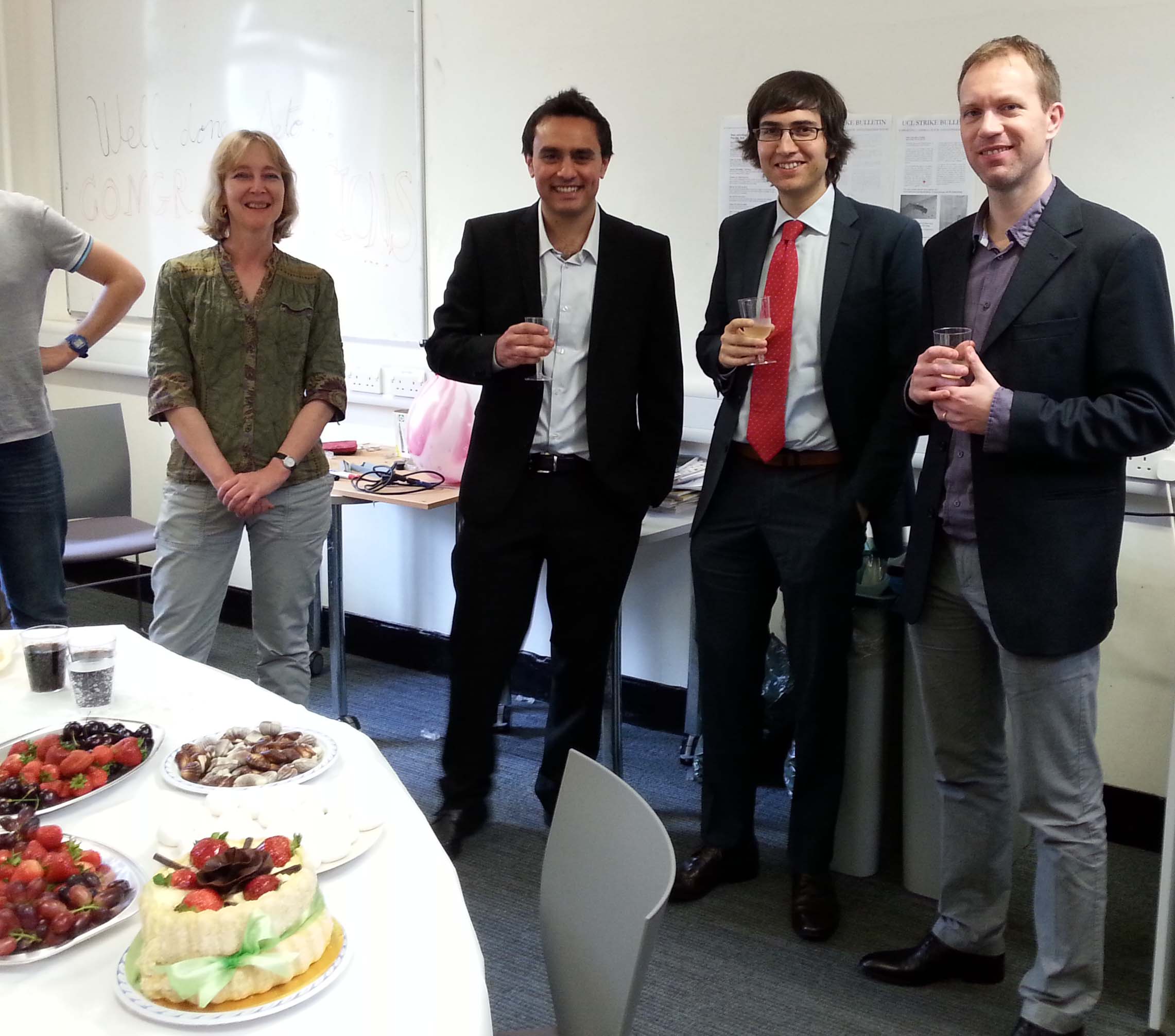
and colleagues August 2015 viva
|
Setrak has graduated

and gone to California UCSD.
|
Goodbye Seto!!! After 4 great years, Seto Balian has graduated and left for a postdoc in California.
In the past we have investigated a range of nonlinear and quantum dynamical behaviours in atomic, molecular and solid-state systems, including quantum behaviour of systems which exhibit chaos in the classical limit.
|
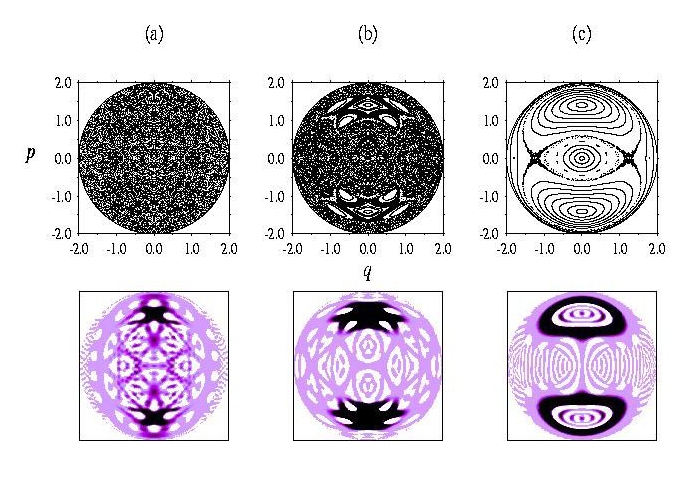
Classical vs
Quantum phase space (Wigner functions) of atomic electron in a strong
magnetic field: (a)chaotic(b)mixed(c)regular
|
|
Resonant
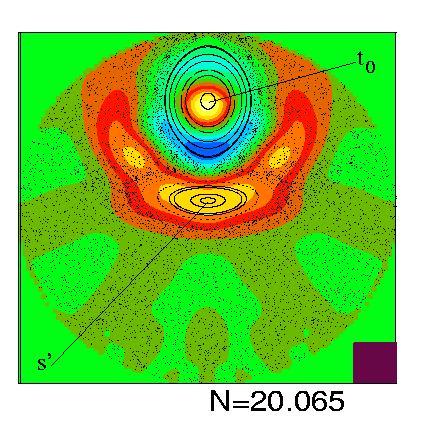
Tunnelling Diodes
|
Rydberg Atoms
in
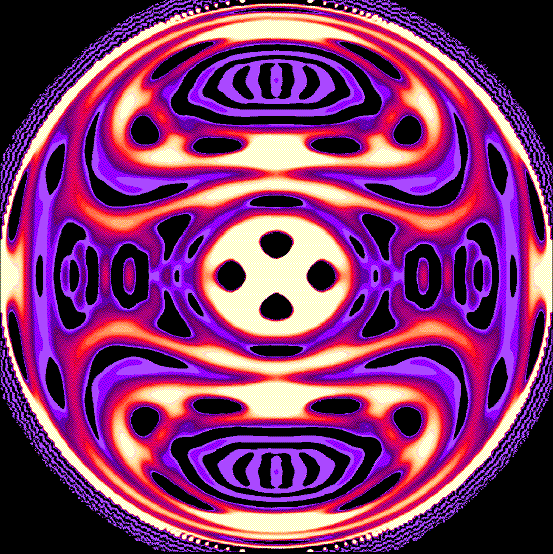
external fields
|
Rydberg
Molecules in
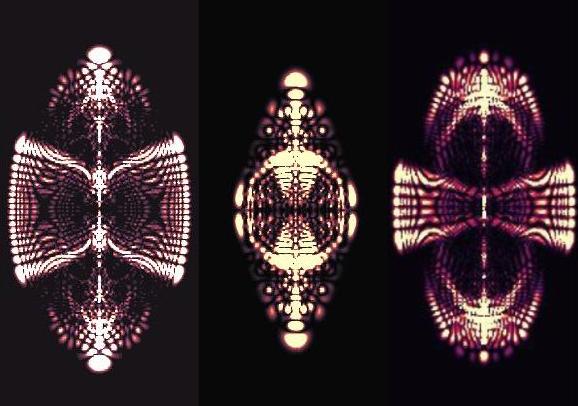
magnetic fields
|
|






















